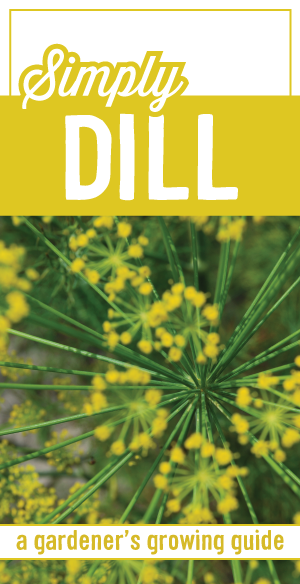
Scientific Name: Anethum graveolens
Order: Apiales
Family: Apiaceae
Genus: Anethum
Plant Type: Herb
USDA Hardiness Zones: 3-11
Soil pH Level: 5.5 - 7.5
Soil Texture: Well-Drained & Loamy
Sun Exposure: Full
Appearance Description: Dill is a self-feeding plant with feathery bright green leaves. Dill can reach up to 3-feet in height.
How to Plant:
1. Work the soil until it has a smooth and broken-up consistency.
2. Amend native soil with compost, manure, or any other material.
3. Space each row at least 12-inches apart.
4. Scatter seeds across the ground.
5. Apply a light layer of fertilizer-enriched soil.
6. Seeds should be no more than 1/4-inch under ground.
How to Maintain:
1. Water at least 2 times a week during the growing season.
2. Once seeds have matured, thin them to about 9-inches apart.
3. Fertilize once or twice a month during the growing season with an all-purpose fertilizer.
4. Continue to sow seeds every few weeks to encourage a season-long supply of fresh dill.
How to Harvest:
1. Harvest when the plant produces at least 4 leaves.
2. To remove, pinch off with fingers or cut with scissors.
3. Pinch off entire stalks if desired.
Storage Tips:
Dill can be frozen or dried in order to last 2-6 months.
Top Varieties:
1. Fernleaf Dill
Fun Facts:
1. Dill used to be given to fussy babies as a soothing medication.
2. Dill was once thought to cure hiccups when inhaled.
3. Dill is one of the most important culinary herbs and is best when applied to hot recipes.
4. All parts of the herb can be used for culinary purposes, which is rare.
5. Dill is the spice used in pickled cucumbers, hence "dill" pickles.
Related Soil:
Schultz Moisture Plus Potting Mix
Related Plant Food:
Schultz All Purpose Water Soluble
Schultz Flower & Vegetable Extended Feed
Schultz All Purpose Extended Feed
Schultz Granular Tomato & Vegetable Plant Food
Schultz Granular All Purpose Plant Food






